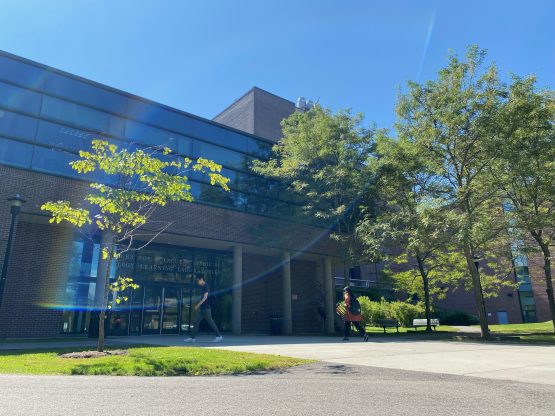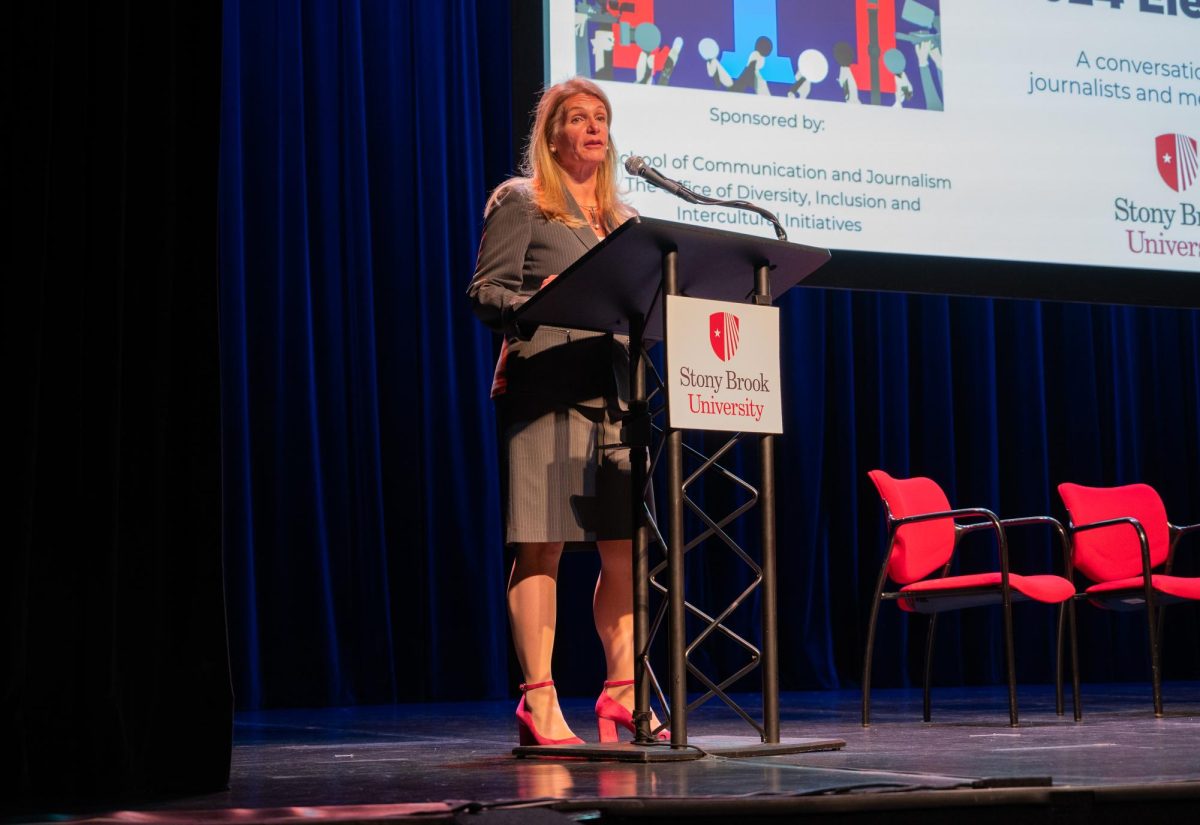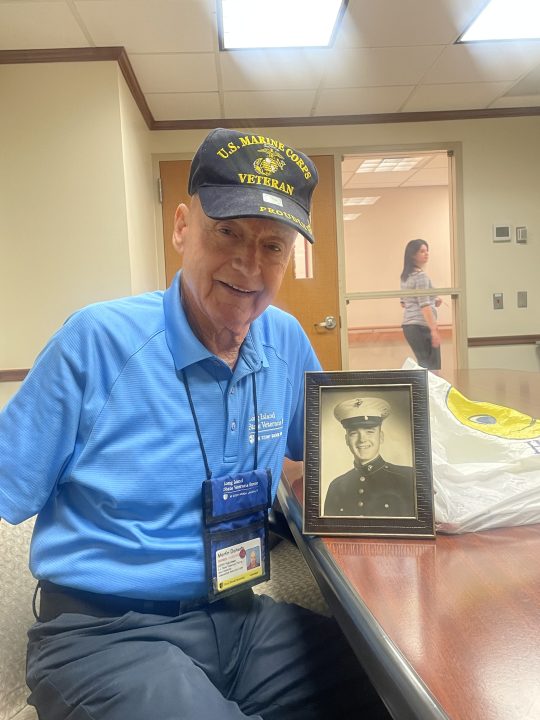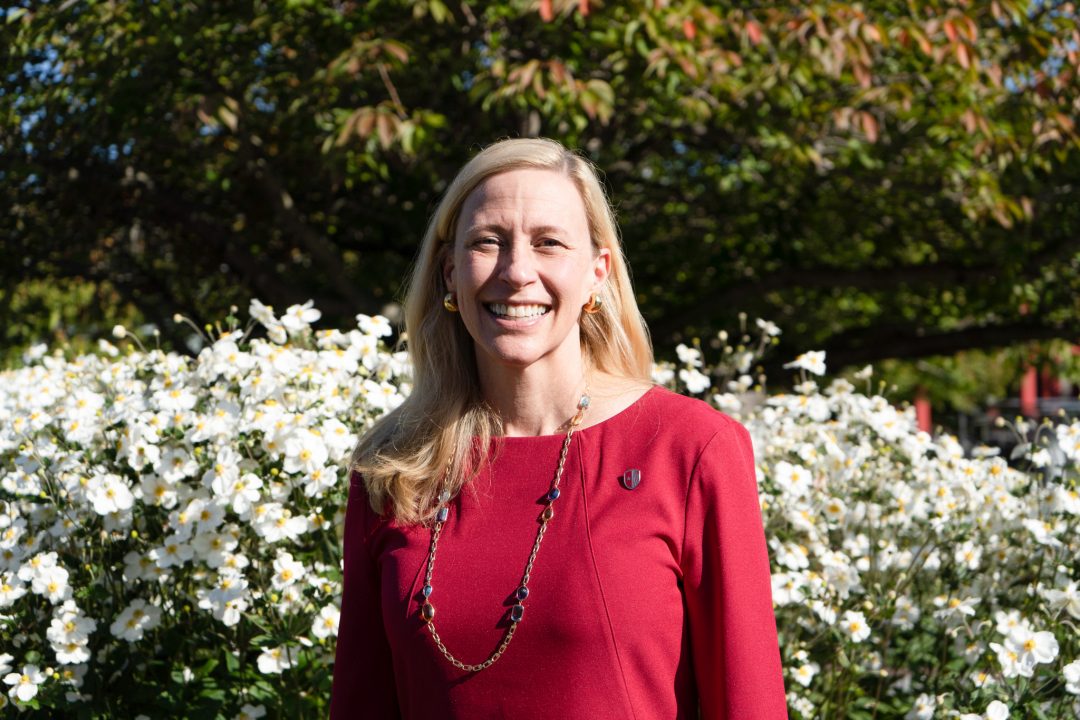
Laura Streminsky, a sophomore biology major on the pre-med and pre-PA track, and an ethical vegan, found herself dismayed when she discovered that she would have to perform an animal dissection on a rat and a worm for her BIO 204 course.
Streminsky reached out to her graduate TA, Cecilia Yan, with her concerns: as an ethical vegan and animal rights activist, Streminsky told Yan that she does not feel comfortable dissecting any kind of animal.
It was not until Yan directed Streminsky to her professor that conflict arose.
“I thought there were laws in place that would let me get out of it. So I didn’t think that it would be such a big deal,” Streminsky said.
Streminsky emailed Professor Marvin O’Neal of the biology department during a correspondence that began on Sept. 13, stating that she would be sitting out of the animal dissection lab. She inquired about possible alternatives. Streminsky forwarded the email exchange to The Statesman.
“I very adamantly oppose the exploitation of animals in lab in any capacity, so can I please do an alternative assignment for the portions of the labs where students use isopods as well?” Streminksy wrote in her email to O’Neal. “Will my grade be impacted by my refusal to use animals?”
O’Neal responded with an email containing the following paragraph, with the word “extremism” above it: “Any range of positions across any topic, have extremes; that is, viewpoints at the ends (extremes) of that spectrum. In your email, there were several positions at the extreme of the animal use spectrum. Most people hold a different view, one that would balance the loss of life with the benefits to humans.”
O’Neal explained within this email that many people would disagree with Streminsky’s beliefs, just as many people would disagree with the torture of animals.
O’Neal also asked Streminsky to reconsider her stance on animal rights and veganism and expressed concern over how her views would impact other students in the course.
“I am concerned that you may try to disrupt this course,” O’Neal wrote. “Those words, phrases, and falsehoods are found on PETA websites (and others), who advocate the use of violence, embarrassment, and ‘by all means necessary’ to stop the use of animals for all purposes. I beg you not to engage in this behavior, to respect the laws of our community/state and respect the rights of your fellow students.”
Both O’Neal and Yan declined to comment on this article.
“Once I got the email from Dr. O’Neal, I felt a lot more concerned because it’s something I’ve opposed for years,” Streminsky said. “It’s something I’ve been advocating against for a long time. So it really made me feel bad knowing that the school didn’t have my back.”
Streminsky has been vegan for seven years and an active animal activist for five years. She was a part of her high school’s animal rights club but has not found a similar organization at Stony Brook.
After The Statesman reached out to O’Neal for comment, the professor sent an email — including Streminsky — to Deborah Spikes and Rebecca Garcia, the other BIO 204 professors, and Professor John Peter Gergen, the head of the biology department.
Spikes, Garcia and Gergen did not respond to The Statesman’s requests for comment.
The email, which was directed to Gergen, reads, “This student has threatened to go to the Statesman. She has extreme views regarding use of animals. Advice?”
“For animal activists, it is exactly the opposite,” Lisa Levinson, a Sustainable Activism Campaigner for In Defense of Animals (IDA), said in response to hearing O’Neal’s statement. “What is happening in the standard American diet, in the food production, that is extreme. We’re literally murdering and killing other beings. We are eating their body parts. That is extreme.”
IDA is an organization that provides support and resources for animal rights activists.

Samantha Crowe, People for the Ethical Treatment of Animals’s (PETA) Science Education Manager, also agrees that Streminsky’s beliefs are not extreme.
“The only thing that is extreme here is an extremely speciesist worldview,” Crowe said.
In response to O’Neal’s email, and after filing a grievance against the professor, Streminsky had a meeting with Gergen and O’Neal on Sept. 18. The meeting resulted in O’Neal issuing an apology to Streminsky, with Streminsky being permitted to do the lab assignment remotely.
Streminksy was unaware that a dissection would be a part of this course. She searched the course’s syllabus and looked “all over the internet,” yet found nothing except a singular Reddit post about having to perform a dissection within the course.
The first time she heard about a dissection in class was when she overheard a recitation professor discussing it.
According to Stony Brook’s Office of the Provost on Academic Policies and Student Responsibilities, students must “obtain and understand the course syllabus” and “address any conflicts in the syllabus” with the course’s professor.
However, the BIO 204 syllabus for the fall 2022 semester does not include anything about a dissection; it only mentions a “comparative anatomy.”
The official undergraduate biology bulletin does not include anything about animal dissection in the BIO 204 course either.
Regardless, as a biology student looking to apply to medical school, Streminsky finds herself in an ethical dilemma; she is required to take the course to complete her major.
“I think everyone deserves a right to life. I think we have a responsibility to minimize suffering as much as possible and if animals can suffer then they should be a part of our moral consideration,” Streminsky said.
Streminsky explained that animal dissection as a whole is counterintuitive to everything that she stands for. Her love of medicine stems from helping others, both humans and animals.
Her situation is not a unique one. She finds herself in the same shoes as Jennifer Routh back in 1990.
At the time, Routh was a sophomore at Stony Brook who wanted to pursue a degree in biochemistry. As a vegetarian and animal rights activist, Routh refused to participate in an animal dissection for an introductory biology course.
After being told that she would receive a zero for the lab assignment if she did not participate, Routh sued the university, arguing that her first amendment rights were being violated.
“The first amendment of the United States constitution says that we have the freedom of religion, but the board has also said that non-traditional spiritual beliefs or beliefs that, for all intents and purposes, function as equivalent beliefs in the life of the believer, those beliefs matter,” Gary Francione, the lawyer who represented Routh and a professor at Rutgers University, said.
After hearing about Streminsky’s situation, Francione offered legal counsel, and found that Susan Blum, the Senior Managing Counsel and Senior Adviser to the President at Stony Brook University, is the lawyer that represented Stony Brook 32 years ago in Routh’s case. Blum never responded to requests for comment.
Routh ended up dropping the 1990 lawsuit. According to The New York Times, she received a C+ in the course and was not penalized for not participating in the animal dissection.
Francione recalled his experience with Routh’s case. “I remember, we actually filed a suit, they [the university] wouldn’t do anything … SUNY made a motion to dismiss the case,” he said.
According to Francione, since Routh’s case, the Supreme Court has made it easier for the State to burden people’s religious or moral beliefs.
He understands Streminsky’s frustration. No longer practicing law, Francione is still an active animal rights activist and has been vegan for 40 years.
Francione, Levinson and Streminsky all agree that a change in mindset is well overdue.
“Transparency is key, and also legislation based on that transparency,” Levinson said. “We can get new laws in place that can help and support this new way of thinking about animals, as our neighbors or as our extended family.”
According to the American Anti-Vivisection Society, 21 states have laws protecting K-12 students from participating in animal dissections if they choose not to do so. These are widely referred to as dissection choice laws.
“I’m just so sorry for the student. I can’t imagine, really, the ethical dilemma she was caught up in,” Jackie Thomas, a volunteer hotline counselor for the IDA Activist Support Hotline, said after hearing about Streminsky’s situation.
Thomas said that she has received many calls from high school students who were against dissecting animals.
However, unlike for K-12, there is no standardized law across American universities that sets any guidelines for animal dissections. Many universities have their own rules pertaining to animal dissections, including Hofstra University.
According to Hofstra’s Animal Dissection Policy, “There will be no penalty (loss of grade) if a student does not dissect, but participates in the lab in other ways. Students work in pairs or small groups, some students dissect, other photograph the specimen, others take notes and record data.”
“I think it’s important to know that every year, more than 10 million animals are used in classrooms in the U.S., and these animals, the majority of them, are either stolen from their homes in the wild, or they’re bred in warehouses by the millions,” Crowe said.
According to Dr. Thomas Zimmerman, the director of Stony Brook University’s Division of Laboratory Animal Resources, “All Stony Brook University class procedures involving animals, have been approved by the Institutional Animal Care and Use Committee and are in compliance with state and federal regulations. All animals are euthanized by methods in accordance with the American Veterinary Medical Foundation (AVMA) Panel on Euthanasia recommendations by trained staff.”
Crowe does not see the necessity of including animal dissection within biology courses. She taught biology courses at Trident Technical College in South Carolina for 12 years.
“Not once did we dissect animals,” Crowe said.
Crowe referenced a systematic review — Animal Dissection vs. Non-Animal Teaching Methods: A Systematic Review of Pedagogical Value — that she co-wrote and published in The American Biology Teacher this year. The review contains research from 20 different studies conducted from 2005 to 2020.
The review revealed that in 95% of the studies, students across all education levels performed just as well as their peers using non-animal methods (NMA) compared to animal dissections.
Of those studies, 73% of students performed better than their peers that dissected animals.
“Medical schools no longer use any animals for dissection,” Crowe added. “So clearly, undergraduate students don’t need to dissect for experience on animals.”
An article in The University Star reveals that the American Medical Association does not recommend animal dissection as a part of medical schools’ curriculums.
However, the Association of American Medical Colleges (AAMC) “strongly affirms the essential and irreplaceable role of research involving live animals in the advancement of biological knowledge, human health, and animal welfare,” according to the AAMC’s website.
In fact, a study from the International Journal of Environmental & Science Education which involved science and biology teachers from Ontario secondary schools revealed that 87.5% of these teachers believed that animal dissection is an important tool in teaching biology.
“The level of effectiveness of alternatives would depend on the purpose of a particular lab. Additionally, effective alternatives to dissection are determined by the instructor of the class,” Zimmerman said.
“I feel so relieved,” Streminsky said in response to being able to do the lab remotely.
She called a friend in the same class to work on it from another location.
However, this experience impacted Streminsky deeply.
In her correspondence with O’Neal, she wrote “I’ve been implied to be an extremist, culturally-insensitive, and borderline a terrorist with your association of me with groups enacting ‘lawlessness, anger, and destruction.’ Needless to say, I feel incredibly disrespected.”
This ties into a larger theme of vegan students feeling neither supported nor visible at Stony Brook.
“I think Stony Brook has a long way to go,” Liam Connolly, a sophomore studying applied math and physics, said regarding the university’s acceptance and support of vegan students. Connolly is a vegan.
Some students in particular feel that the vegan meal options on campus are significantly lacking.
“I have friends that have problems with the vegan food on campus because most of the time they’re forced to just microwave vegetables and potatoes due to a lack of options,” Lubaba Sharif—a sophomore double majoring in earth and space science and atmospheric and oceanic studies with a minor in astronomy on the pre-med track— said. “They’re making it themselves, not going to the dining hall, because if they go to the dining hall it’s just a salad bar.”
According to Streminsky, Stony Brook currently has no student clubs or organizations for vegans or animal rights activists. She plans to start the first one.
Students like Connolly and Streminsky believe there is still a lot of work that needs to be done in order to better understand and support vegan students.
“The thing that a lot of people don’t understand about veganism is that it’s an ideology,” Connolly said. “It is an ideology where one seeks to minimize the harm that they do to others through their actions and specifically pertains to animals, but people as well.”
Clarification: This article was updated on Sept. 21 to clarify the fact that the animals being dissected were a rat and a worm.
























Dan • Oct 17, 2022 at 10:07 am
This is shameful and disgusting. The remarks her teacher made were very reasonable. His comment was on her views being extreme and not on her character. In fact, it’s absurd that this “article” (hit piece) should use as a source none other than a representative of the exact organization which he says is promoting falsehoods. Where is the counter argument? Where is the debate? There is no discussion in defense of the people attacked in this article. Streminsky did nothing beside prove the point that these types use any means necessary to push their ideology upon others, in this case threatening legal action and reputational damage, citing prior law suits involving the 1st amendment and religious freedoms. It would be one thing if the school required her to kill the lab subject, but the task was to learn through dissection in order to better prepare for being a doctor. I would suggest that Streminsky should be a lawyer instead if she doesn’t have the guts for the means by which she must pursue knowledge, but as a lawyer she would just be a ruthless bully. The graceful action she could have taken would be to disagree with the curriculum and take the failing grade on the assignment. In the end she would have upheld her principles and it wouldn’t have affected her standings to get into a medical school so much to be noticeable in the long run. This article and the series of events it describes makes me fear for the future of our academies, the study of medecine, and the future of journalism as well.
Rebecca Libauskas • Sep 22, 2022 at 2:43 pm
I commended this young lady for upholding her moral principles in the face of pressure and harassment. It’s not always easy to do the right thing, but her brave actions will get people talking about why we are still killing and cutting open animals in the name of “science” when there are so many other humane alternatives.
Nicole G. • Sep 22, 2022 at 1:59 pm
I find it disheartening that a professor in 2022 would find a student’s ethical perspective “extreme and disruptive.” She simply requested a non-animal option for the dissection lab. Today there are a multitude of innovative resources that can be explored to replace animal dissections at every education level. I think it is fair for universities, like Stony Brook, to offer non-animal methods for those students who request them for classes that offer dissection labs. As relayed in this article, studies show that students do learn just as well and many times better when using alternatives to dissection compared to animal dissections. I would encourage Stony Book University administration to investigate the dissection options available today and implement a formal dissection choice or opt out policy for compassionate students, like Laura, who take a stand against animal dissection practices.
G. • Sep 22, 2022 at 11:08 am
Well done reporting on this. Veganism is an extremely common and increasingly popular life choice. Students should absolutely be supported by this. At the very least, it is completely inappropriate for professor to treat a student like this.
LucyP • Sep 22, 2022 at 8:44 am
Laura should be applauded for sticking to her ethical convictions despite the pressure and bullying she’s faced for it. The expectation to dissect once-living beings dissuades many students, particularly females, from pursuing degrees and careers in the sciences–and that is a loss on so many levels, especially since there are advanced non-animal methods that can teach this material as well as or even better than dissecting animals.
Josh • Sep 21, 2022 at 4:38 pm
“Streminsky (a sophomore biology major on the pre-med and pre-PA track), explained that animal dissection as a whole is counterintuitive to everything that she stands for. Her love of medicine stems from helping others, both humans and animals.” There would be no such thing as medicine if animal testing did not exist, she might want to find another track
Carl • Sep 21, 2022 at 2:02 pm
Dissection is not needed. A better alternative is to learn anatomy by viewing images such as MRI or CT images or photographic anatomical images. This experience closely duplicates how anatomy is used in the practice of healthcare. Stony Brook needs to enter the 21st century and modernize its teaching of biology.
Ken Towe • Sep 21, 2022 at 11:12 am
“…so can I please do an alternative assignment for the portions of the labs where students use isopods as well?”
An isopod is also an animal. Do heart surgeon medical school students”dissect” an open heart to replace an aortic valve? This whole discussion borders on the absurd.
Javier Chong • Sep 21, 2022 at 3:55 am
So basically you proved she’s just an extremist and then talk about vegan food. What a poorly written article!